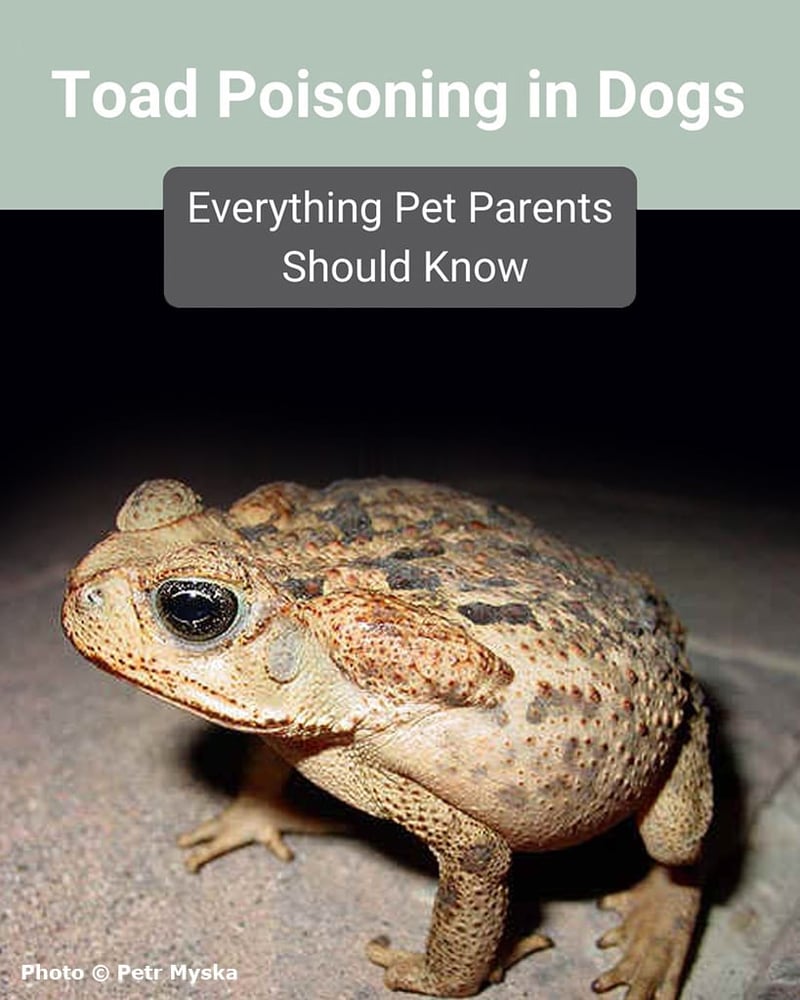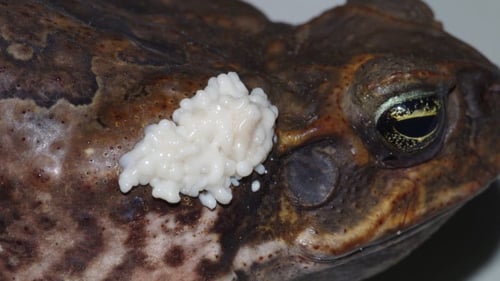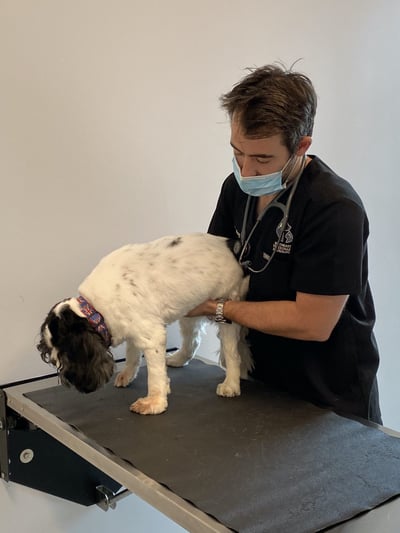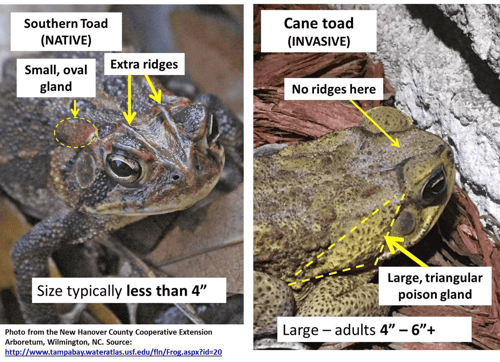Toad Poisoning in Dogs: Everything Pet Parents Should Know
Florida is home to quite a diverse population, including people from all over the world, a rich marine life, and an extensive list of reptiles and amphibians; in addition to bears, big cats, wild boars, and monkeys… Yep, monkeys. Being a travel and trade hub, while boasting an inviting climate, Florida has become a breeding ground for more invasive species than any other state. As we move into summer, warmer and rainier weather means watch out for toad poisoning in dogs.

What Are Bufo Toads?
The most toxic species of poisonous toad in the US is Rhinella marina (formerly Bufo marinus), commonly known as cane toads or (rather redundantly) Bufo toads. This giant toad can measure six to nine inches long and weigh up to five pounds. Although well established in Florida, it is an invasive species that threatens native wildlife and our pets.
As a defense mechanism, cane toads secrete potent toxins from large triangular-shaped glands behind the eyes. Contact with a dog’s mucous membranes can quickly result in systemic absorption. Once in the bloodstream, the toxins target the central nervous system and heart.

Photo credit: Brisbane Times
Symptoms of Toad Poisoning in Dogs
Cane toad poisoning can cause a multifocal life-threatening clinical condition in dogs, and death can occur in as little as 15 minutes. Since there is no test to detect toad toxicity, it is critical to promptly recognize the signs.
IMMEDIATE SIGNS OF TOAD POISONING IN DOGS
Initial warning signs that your dog may have come into contact with a poisonous toad include:
- Profuse foamy salivation
- Head shaking
- Pawing at the mouth
- Retching
- Bright red oral mucous membranes
The severity of toad poisoning depends on how much poison is transferred to the dog and the dog’s size, with systemic signs usually manifesting after a few minutes.
SIGNS OF GASTROINTESTINAL TOXICITY
Signs that toad poisoning has reached your dog’s gastrointestinal tract include:
- Vomiting
- Diarrhea
SIGNS OF NEUROTOXICITY
Signs that toad poisoning has reached your dog’s nervous system include:
- Disorientation
- Weakness
- Ataxia (loss of balance)
- Collapse
- Seizures
SIGNS OF CARDIOTOXICITY
Signs that toad poisoning has reached your dog’s heart include:
- Arrhythmia (abnormal heart rhythm)
- Dyspnea (difficulty breathing)
“Seizures are what we tend to worry about most, as overheating due to prolonged seizure activity is a leading cause of death in these cases,” says Dr. Simon Kornberg, Veterinary Neurologist at Southeast Veterinary Neurology.
What to Do for Toad Poisoning in Dogs
You may have heard that you should wash your dog’s mouth out with a hose to remove Bufo toad toxin. However, rather than risk life-threatening aspiration by flooding a seizing dog’s mouth with water, Dr. Kornberg recommends wiping it out with a wet towel.
“Thoroughly rub the insides of the lips and cheeks, as well as the tongue and gums. Rinse the towel, and repeat several times,” explains Dr. Kornberg.
Then get your dog to a veterinarian. All pets should see a vet after exposure to cane toad toxin, but those with neurological signs should be rushed to the nearest emergency facility immediately.
“These cases can be tricky because they are high stress patients that have likely been seizing for a while, so it’s best to be seen quickly by the nearest doctor who can handle the case, and not have to wait,” Dr. Kornberg urges.
The good news is that most dogs recover from toad poisoning when treated early. “If we can stabilize the patient, the prognosis is good,” says Dr. Kornberg.

Preventing Toad Poisoning in Dogs
Prevalent during warmer periods and rainy season, cane toads are most active at night, so encounters typically occur between late evening and early morning. They are attracted to pet food, water, and porch lights, and they can squeeze into unbelievably tight spaces.
It might not be possible to completely avoid cane toads in South Florida, but you can lower your dog’s risk of toad poisoning by:
- Keeping pets inside when you cannot supervise them, especially at night
- Not leaving pet food or water in open dishes outside, especially at night
- Turning off outdoor lights or using motion-sensor lights
- Maintaining trimmed grass and shrubs
- Eliminating standing water from your property
- Removing brush piles and clutter from your yard
- Walking dogs on leash, especially at night or after rain
What to Do if You Find a Bufo Toad
Toad poisoning is a leading cause of toxicity in dogs along the Gulf Coast. Florida Fish and Wildlife Conservation Commission (FWC) asks residents to euthanize cane toads.
Be sure to use gloves or another tool to handle it, as Bufo toad toxin can irritate skin. A humane way to euthanize a poisonous toad is to put it in a container, refrigerate it for three hours, and then freeze it for 24 hours. Dispose of the carcass in a plastic bag in the trash.
We realize this may be difficult for some animal lovers, but it is against state law to relocate or release a cane toad. If you need help with poisonous toads on your property, you can hire a wildlife trapper.
All that said, it is important to be able to distinguish between Bufo toads and native toads. A good rule of thumb is if it’s less than 1.5 inches long, just leave it alone. Learn how to identify a cane toad in this video.

Ask an Expert for More Information about Toad Poisoning in Dogs
If you have questions about toad poisoning in dogs, please do not hesitate to reach out to one of our veterinary neurologists at Southeast Veterinary Neurology. An expert is standing by 24 hours a day to assist you and your pup.